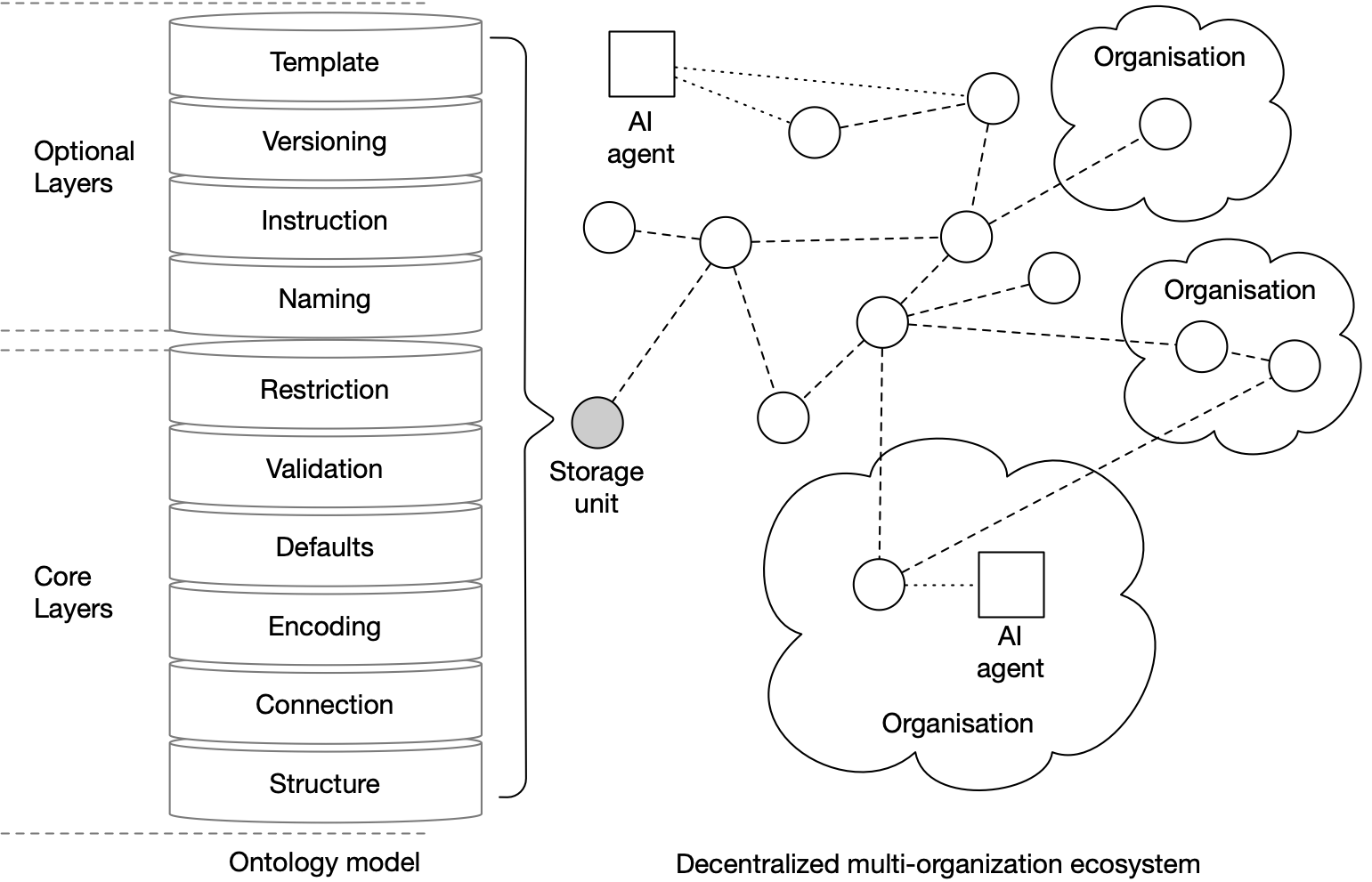Ontology in Openfabric protocol
Openfabric Protocol's ontology provides a common language for AI algorithms, promoting scalability, flexibility, extensibility, decentralization, security, interoperability, and accessibility in the AI ecosystem.
By employing an ontology-based protocol, AI innovators can standardize the format of their algorithms' inputs and outputs. This allows for automatic validation of the data provided and facilitates cross-AI interoperability. This standardized data format also enables the combination of multiple AI instances into execution pipelines.
AI algorithms often have unique requirements for storing data needed for testing, training, and execution. These requirements can be met by storing data in an ontology-based format, enabling AI algorithms to utilize the information without additional processing.

Fig. 2: Ontology high-level architecture
For more in-depth insights into the Ontology architecture, you can visit the specified link: Ontology core. Here, you'll find comprehensive information about each layer of the Ontology architecture, interrelations, and how they contribute to the overall performance of the Openfabric Protocol. This detailed guide will provide you with a better understanding of the Ontology's structure, its role in data handling, and how it aids in enhancing the interoperability and efficiency of AI algorithms within the system.
